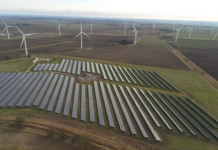Harmony Energy receives £10m credit facility from Triodos Bank UK
Battery storage developer Harmony Energy has received credit facility of up to £10m from sustainable...
Ministry consults on ‘energy smart’ devices to cut consumers’ bills
Energy ministry D-ESNZ today launches a view-seeking exercise, aimed at boosting users’ confidence in adopting...
Watt -erloo sunset: ambitious electricity project to speed decarbonisation of River Thames
Power storage’s expanding acronym soup of competing technologies received another ingredient this morning. On Britain's...
Non-ill wind blows jobseekers some good: DWP & Crown Estate puff offshore recruitment
Ten Jobcentres in East Anglia and Lincolnshire are to be hubs for boosting awareness of...
Schools “need £5.4 Billion” for solar PV & LEDs, if Net Zero is to be met – report
Britain’s 29,000 schools need up to £5.4 billion invested in lighting upgrades and on-roof solar...
E.ON ex-boss takes over at Energy Systems Catapult
Dr Tony Cocker, former CEO of E.ON UK, has been appointed the new chair of...
Sam’s vision: Midcounties teams with Big Solar Co-op to cut 5% off energy bill
A store manager's initiative has led to one of Britain’s biggest co-operatively owned retailers partnering...
Co-op collects divi from ScottishPower’s solar PPA
Energy-to-food-to-burials supplier the Co-op Group has signed a PPA – power purchase agreement - to...
Corporate PPAs within a wider net zero context – webinar
Thank you for attending The Energyst's webinar. Please find the presentations from our speakers below...



































